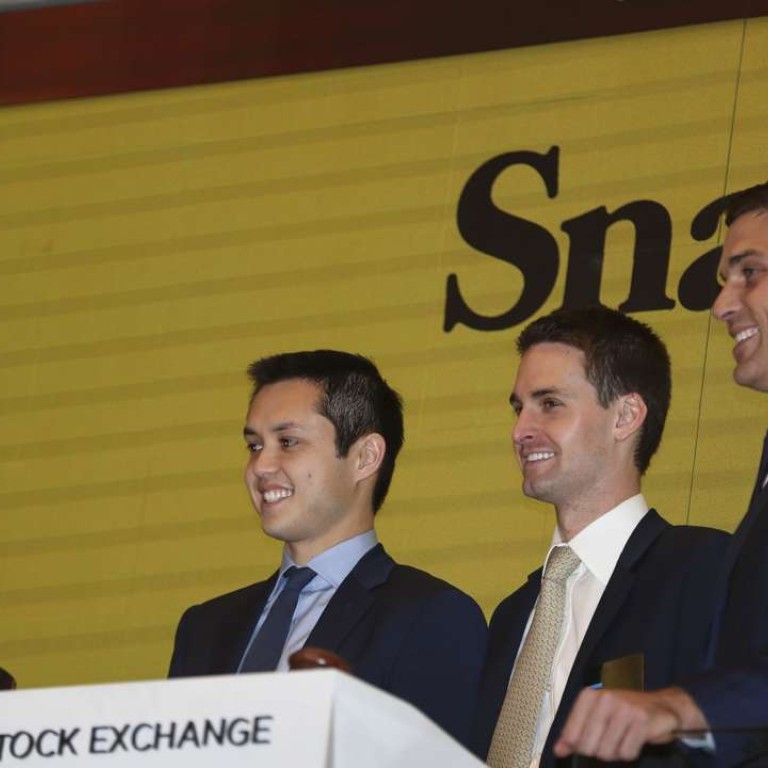
From ‘nude pics’ to a US$33b valuation – how Snap took on Facebook
A loss making company selling disappearing images now possesses a market capitalisation that eclipses many well known global organisations
Anyone over the age of 35 years has difficulty understanding the success of Snapchat’s business and initial public offering (IPO). Shares of Snap opened last week at US$24, above the IPO price of US$17. The opening price valued the parent of the popular disappearing message app at more than US$33 billion. Snap is the largest US-listed tech IPO since Alibaba in 2014, based on amount raised and market capitalisation.
It’s a fantastic story. At one stroke, a loss making company selling disappearing images possesses a market capitalisation that eclipses many well known global organisations that actually generate a decent and growing profit. And it doesn’t own any assets. Truly, these are golden years for young entrepreneurs.
“You mean a company started on dick pics is now worth US$33 billion?,” said a young friend of mine from Snap’s highly valued 18 to 34 year old demographic.
“Dick pics” is the phenomenon where men routinely send women unsolicited pictures of their genitals. It is the original foundation for Snap’s business. Indeed, many parents in the US primarily message their kids on Snap knowing that anyone under 20 years old avoids Facebook.
The motivation for this behaviour is a smartphone-era mystery that was the key to Snap’s success. Men are usually the culprits when it comes to sending naked (particularly unsolicited dick pics), but a survey in 2016 says women send nude selfies (“nudies”) almost as often as men do.
The 2016 Millennial Sex Survey from SKYN Condoms surveyed more than 5,000 sexually active men and women between the ages of 18 and 34 and discovered that 43 per cent of women have sent a naked picture. It isn’t far from the 49 per cent of men who send them. Sixty one per cent of millennial males and 54 per cent of millennial females have sexted (sent sexually explicit messages).
What [Snap] has done is be the first company to find a formula to legitimise porn through an IPO as self-generated content along with messaging
Snap’s dissolving messaging feature creates an implicit ethical barrier to entry against more established and conservative competitors. Dissolving text messages are not a major engineering feat. Indeed, Facebook and Google could probably reverse engineer the function. The problem is that its substantial use for sending dick pics would compromise the rest of their brands. Both of them account for about 80 per cent of online advertising, which forces them to act more conservatively.
No one knows where Snap’s share price and business development strategy will end up, but what it has done is be the first company to find a formula to legitimise porn through an IPO as self-generated content along with messaging.
Snap is one of the most creative companies out there because their approach to problem solving and competitive strategy wasn’t driven by trying to figure out what Facebook was doing. Rather, it is: “Let’s focus on something we can do best.” Its engagement among its young audience is beyond other social media platforms. Its penetration of the US teen and millennial demographic exceeds television.
So yes, Snap’s owners are laughing all the way to the bank. But, now comes the hard part about the tech business. It isn’t making the technology or even attracting users; it’s the monetisation. This is Snap’s biggest problem.
Peter Guy is a financial writer and former international banker

